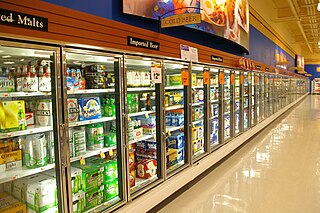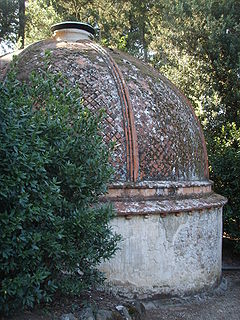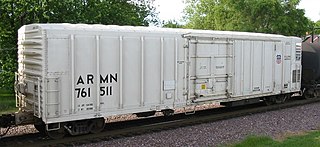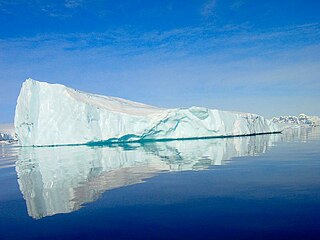This article relies largely or entirely on a single source .(November 2020) |
The Leonard Company was founded in 1881 by Charles H. Leonard in Grand Rapids, Michigan.
This article relies largely or entirely on a single source .(November 2020) |
The Leonard Company was founded in 1881 by Charles H. Leonard in Grand Rapids, Michigan.
The famous Leonard "Cleanable" Refrigerator came about after a mishap in the Leonard home: a pail of hot cooling lard was left inside an icebox on top of a cake of ice, resulting in melted ice, a spilled pail and cooled lard spilled all over. Charles created his refrigerator with removable liners and flues. In 1885, Leonard introduced metal shelves and improved the door-locking mechanisms. 1907 saw the introduction of porcelain lined interiors, which further enhanced the cleanability and sanitation of refrigerators. The refrigerator cabinets were made of highly varnished carved-oak, brass fixtures, and enhanced with mirrors. [1]
Electrical refrigerators were introduced in 1918, and by 1925, Leonard was building one out of every five refrigerators produced in the United States, which amounted to 1000 refrigerators per day. [1] Leonard merged with Kelvinator in 1926. The Leonard brand of appliances continued to be sold exclusively through Leonard dealers, as well as through Canadian and English dealers.

The term refrigeration means cooling a space, substance or system to lower and/or maintain its temperature below the ambient one. In other words, refrigeration is artificial (human-made) cooling. Energy in the form of heat is removed from a low-temperature reservoir and transferred to a high-temperature reservoir. The work of energy transfer is traditionally driven by mechanical means, but can also be driven by heat, magnetism, electricity, laser, or other means. Refrigeration has many applications, including household refrigerators, industrial freezers, cryogenics, and air conditioning. Heat pumps may use the heat output of the refrigeration process, and also may be designed to be reversible, but are otherwise similar to air conditioning units.
The following is a timeline of low-temperature technology and cryogenic technology. It also lists important milestones in thermometry, thermodynamics, statistical physics and calorimetry, that were crucial in development of low temperature systems.

An Ice house, or icehouse, is a building used to store ice throughout the year, commonly used prior to the invention of the refrigerator. Some were underground chambers, usually man-made, close to natural sources of winter ice such as freshwater lakes, but many were buildings with various types of insulation.

An ice cube is a small piece of ice, which is typically rectangular as viewed from above and trapezoidal as viewed from the side. Ice cubes are products of mechanical refrigeration and are usually produced to cool beverages. They may be produced at home in a freezer with an ice tray or in an automated ice-making accessory. They may also be produced industrially and sold commercially.

A refrigerator is a home appliance consisting of a thermally insulated compartment and a heat pump that transfers heat from its inside to its external environment so that its inside is cooled to a temperature below the room temperature. Refrigeration is an essential food storage technique around the world. The lower temperature lowers the reproduction rate of bacteria, so the refrigerator reduces the rate of spoilage. A refrigerator maintains a temperature a few degrees above the freezing point of water. Optimum temperature range for perishable food storage is 3 to 5 °C. A similar device that maintains a temperature below the freezing point of water is called a freezer. The refrigerator replaced the icebox, which had been a common household appliance for almost a century and a half.
Kelvinator was a United States home appliance manufacturer and a line of domestic refrigerators that was the namesake of the company. Although as a company it is now defunct, the name still exists as a brand name owned by Electrolux AB. It takes its name from William Thomson, 1st Baron Kelvin, who developed the concept of absolute zero and for whom the Kelvin temperature scale is named. The name was thought appropriate for a company that manufactured ice-boxes and refrigerators.

A refrigerator car is a refrigerated boxcar (U.S.), a piece of railroad rolling stock designed to carry perishable freight at specific temperatures. Refrigerator cars differ from simple insulated boxcars and ventilated boxcars, neither of which are fitted with cooling apparatus. Reefers can be ice-cooled, come equipped with any one of a variety of mechanical refrigeration systems, or utilize carbon dioxide as a cooling agent. Milk cars may or may not include a cooling system, but are equipped with high-speed trucks and other modifications that allow them to travel with passenger trains.
Nash-Kelvinator Corporation was the result of a merger in 1937 between Nash Motors and Kelvinator Appliance Company. The union of these two companies was brought about as a result of a condition made by George W. Mason prior to his appointment as CEO of Nash. Nash-Kelvinator ranked 27th among United States corporations in the value of World War II production contracts.
Auto-defrost, automatic defrost or self-defrosting is a technique which regularly defrosts the evaporator in a refrigerator or freezer. Appliances using this technique are often called frost free, frostless, or no-frost.

An ice pack or gel pack is a portable plastic bag filled with water, refrigerant gel, or liquid. To be prepared for use, the pack is first placed in a freezer. Both ice and other non-toxic refrigerants can absorb a considerable amount of heat before they warm above 0 °C (32 °F) used to keep food cool in portable coolers, or as a cold compress to alleviate the pain of minor injuries, or in insulated shipping containers to keep products cool during transport.

Yakhchāl is an ancient type of ice house that functions as an evaporative cooler. Above ground, the structure had a domed shape, but had a subterranean storage space. It was often used to store ice, but sometimes was used to store food as well. The subterranean space coupled with the thick heat-resistant construction material insulated the storage space year round. These structures were mainly built and used in Persia. Many that were built hundreds of years ago remain standing.

An icebox is a compact non-mechanical refrigerator which was a common early-twentieth-century kitchen appliance before the development of safely powered refrigeration devices. Before the development of electric refrigerators, iceboxes were referred to by the public as "refrigerators". Only after the invention of the modern day electric refrigerator did early non-electric refrigerators become known as iceboxes. The terms ice box and refrigerator were used interchangeably in advertising as long ago as 1848.

An icemaker, ice generator, or ice machine may refer to either a consumer device for making ice, found inside a home freezer; a stand-alone appliance for making ice, or an industrial machine for making ice on a large scale. The term "ice machine" usually refers to the stand-alone appliance.

An absorption refrigerator is a refrigerator that uses a heat source to provide the energy needed to drive the cooling process. The system uses two coolants, the first of which performs evaporative cooling and is then absorbed into the second coolant; heat is needed to reset the two coolants to their initial states. The principle can also be used to air-condition buildings using the waste heat from a gas turbine or water heater. Using waste heat from a gas turbine makes the turbine very efficient because it first produces electricity, then hot water, and finally, air-conditioning—trigeneration. Absorption refrigerators are commonly used in recreational vehicles (RVs), campers, and caravans because the heat required to power them can be provided by a propane fuel burner, by a low-voltage DC electric heater or by a mains-powered electric heater. Unlike more common vapor-compression refrigeration systems, an absorption refrigerator can be produced with no moving parts other than the coolants.

A refrigerator truck or chiller lorry is a van or truck designed to carry perishable freight at low temperatures. Most long-distance refrigerated transport by truck is done in articulated trucks pulling refrigerated semi-trailers.

Regenerative cooling is a method of cooling gases in which compressed gas is cooled by allowing it to expand and thereby take heat from the surroundings. The cooled expanded gas then passes through a heat exchanger where it cools the incoming compressed gas.

Cold is the presence of low temperature, especially in the atmosphere. In common usage, cold is often a subjective perception. A lower bound to temperature is absolute zero, defined as 0.00 K on the Kelvin scale, an absolute thermodynamic temperature scale. This corresponds to −273.15 °C on the Celsius scale, −459.67 °F on the Fahrenheit scale, and 0.00 °R on the Rankine scale.

A refrigerated van is a railway goods wagon with cooling equipment. Today they are designated by the International Union of Railways (UIC) as Class I.

Nizer Corporation was a maker of electrically cooled ice-cream cabinets and other types of commercial refrigerators, based in Detroit Michigan. During its active years, it was the market leader in this field.

The ice trade, also known as the frozen water trade, was a 19th-century and early-20th-century industry, centring on the east coast of the United States and Norway, involving the large-scale harvesting, transport and sale of natural ice, and later the making and sale of artificial ice, for domestic consumption and commercial purposes. Ice was cut from the surface of ponds and streams, then stored in ice houses, before being sent on by ship, barge or railroad to its final destination around the world. Networks of ice wagons were typically used to distribute the product to the final domestic and smaller commercial customers. The ice trade revolutionised the U.S. meat, vegetable and fruit industries, enabled significant growth in the fishing industry, and encouraged the introduction of a range of new drinks and foods.